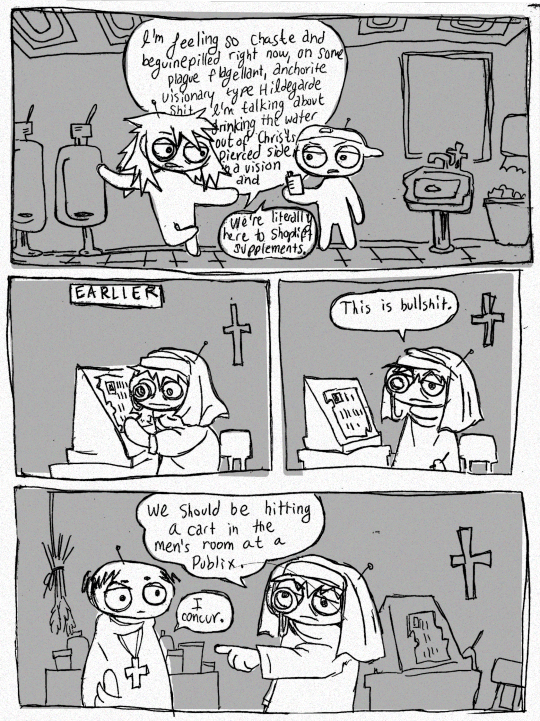Text
truly so wonderful that I'm at a point in my life where someone can say one sentence to me that transforms everything.
Rebbeca says she's glad I found my world: that it is a common experience to find something that seems small and tap on it and find that it expands infinitely! and suddenly I'm not floating around a horrifying alien world, I'm just a twenty year old excited about reading books
0 notes
Text
today Rick was like: the thing about the archaic torso of apollo is that it lulls you into beauty and then shocks you. and the shock value never wears off no matter how many times you read it because the beginning is so genuinely charged with enthusiasm and genuine deep appreciation of beauty that it will ALWAYS surprise you at the last two lines.
This is so true. And it made me realize that the methods of extra-lingual poetry don't always have to be as heavy handed as paradox, repetition, negative theology, blah blah etc. etc. absurdity nonsensicality. It can also be something much more intimate like this. I mean the thing sticks its whole hand in your brain and starts petting it like a rabbit and then it GRABS YOU AND GETS YOU.
Not shitting on paradox or absurdity, but maybe I am shitting on negative theology and repetition. Haha didn't Bly say it best... these are methods of the intellectual... not the archaic animal poet
0 notes
Text
Sometimes I'll be sitting around like: what do I do on this path? How do I remember the path, if I fall off of it? then Mirabai says: "listen, my friend, this path is the heart opening". oh yes, of course, it's the heart opening up!!
what's great is knowing that all paths are the same path. Learning, writing, reading poetry has the same destination as reading and learning rgst. The more I read the more clearly defined the edges are.
the end of course is mystical union with the ineffable. For some I suppose this is "head to head" communication, or experience touching or talking to God... but in a surprising turn of my psyche (considering how armored I am by personality!!) I actually do not want to retain my personhood when I meet God. I would much rather enter the river of divinity as one force with everything else!
0 notes
Text
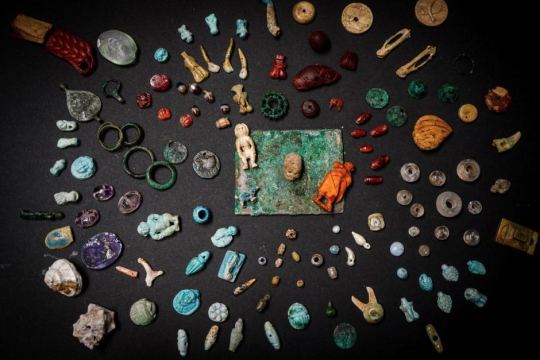
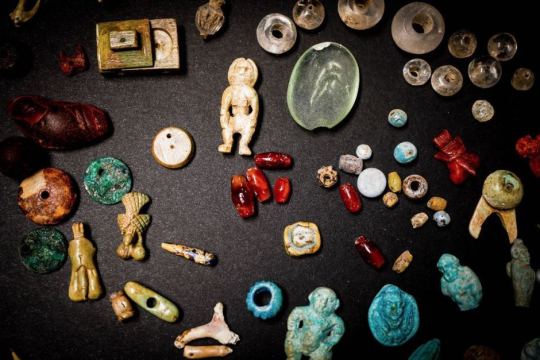

Esoteric arts: Archaeologists at Pompeii in Italy have found what they believe is a female sorcerer’s box of objects. The magnificent little miniature amulets, gems, and other items were found in the remains of a wooden box at Casa del Giardino, and were most likely used for personal ornamentation or protection from evil forces and bad luck. Among the objects found were crystals, buttons made of bones, phallic amulets, and a glass bead engraved with the head of Dionysus.
506 notes
·
View notes
Text
"And the cupbearer that struck him came down to the fountain to draw water. And there happened to be a lion there which killed him and left him lying in the place, after tearing his limbs asunder. And dogs immediately seized his limbs, among them a black dog, which grasped his right hand in his mouth and brought it to the place of the banquet." (Acts of Thomas 8)
"My God will forgive you for this wrong in the world to come, but in this world he will show his wonders, and I shall soon see that hand that struck me dragged along by dogs" (Acts of Thomas 6)
1 note
·
View note
Text
"My God will forgive you for this wrong in the world to come, but in this world he will show his wonders, and I shall soon see that hand that struck me dragged along by dogs" (Acts of Thomas 6)
1 note
·
View note
Text
can't believe that there is an entire tumblr page dedicated to dissing mary worship "gross spiritual darkness" "idolatry" first of all
"In order to understand how Mary was at that
Moment, you’d have to find some place inside you
Where pillars hold you up, where you can feel
Stairways, where arches give support to
A perilous bridge over some deep space which
Endured in you simply because it was built up
Out of rocks that you couldn’t possibly lift
Now out of yourself or you would bring yourself down.
If you’re so far along that everything in you is stone,
Great walls, ascending stairs, views, domes– then try
To pull aside with both hands that great hanging cloth
Just in front of your face, a little, at least.
The light of glory shines down from the high things
More powerful than your breath or your feelings.
One palace over another palace, from below, from above,
Parapets rise out of deeper parapets
Finally emerging so high up that you, if
You took it in, would be afraid of falling.
Meanwhile, clouds of incense from the burners
Trouble the air around you, but the most distinct things
Aim straight at you with their steady beam.
And when next the clear flames of the burning lamps
Play over the elaborate robes that are approaching
Could you endure this?"
second of all we went wrong the second the iconoclasts lost to the iconophiles (it's literally all idolatry) and third of all get a life -_-
0 notes
Text
really wanting to add my own thoughts to the council of ephesus. if only nestorius could read mechthild and understand mary as a pre existing being (like god + christ). calling her theotokos is an understatement and using christokos without acknowledging her connection 2 God is offensive to the trinity. cyril should have been excommunicated instead #sadhistory
0 notes
Text

If my younger self saw this picture they would try to kill me with a gun
0 notes
Text
Do you ever decide your interest ends 1450 and then the Tudor period goes 😏Heyyyyyyyyy
0 notes
Text

Walters Art Museum Book of Hours W.90 fol. 12v
Labors of the Months/ feeding pigs
11 notes
·
View notes
Text
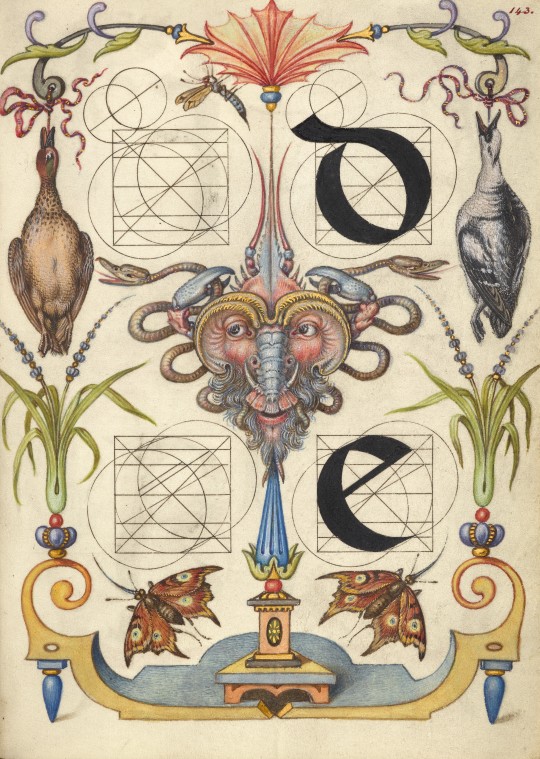
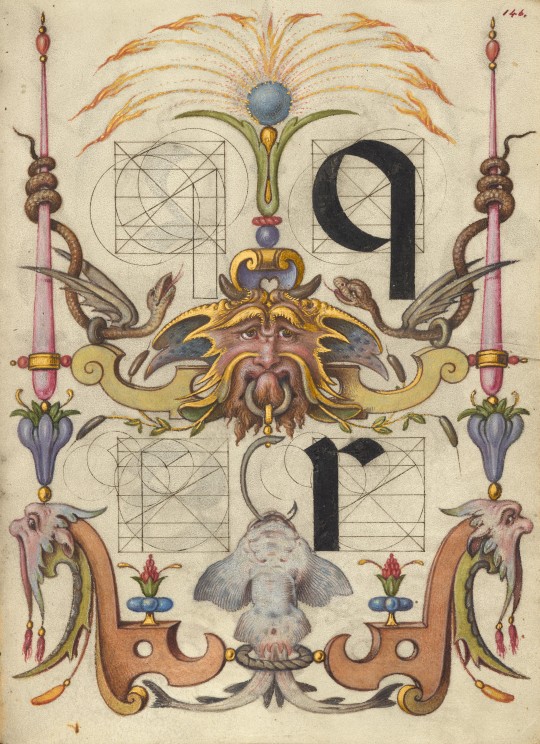
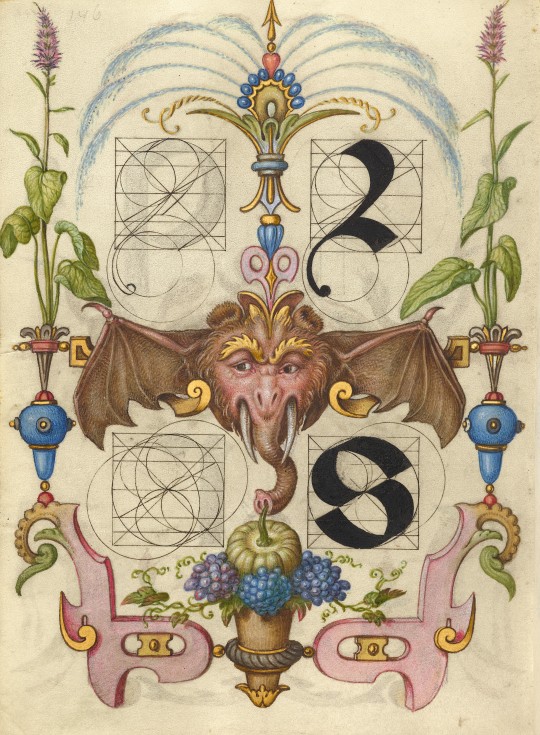

"guide to the construction of letters"
pages from the "model book of calligraphy", vienna, originally created by georg bocskay from 1561-62, illuminated and expanded by joris hoefnagel, c. 1591–96
source: Getty Museum Collection, Ms. 20 (86.MV.527), fol. 143r-147r
735 notes
·
View notes
Photo



“[The nunnery of] Helfta [founded in 1229] was an important center of study and production of knowledge, to the point that some have come to regard it as a sort of female university. Three women religious who were also mystics and writers, stand particularly out: Mechthild of Hackeborn, Gertrude the Great and Mechthild of Magdeburg. The common spiritual features shared by these three authors, and especially by first two, have given birth to the notion of the “spiritual school or Helfta”, also known as the circle of female theologians of Helfta. Before the 12th and 13th centuries, monasteries were the main European learning centers, where both monks and nuns accessed a specific kind of knowledge that combined erudition and spirituality. This situation changed with the birth of universities, spaces exclusive to men that turned theology into a science somehow dissociated from spirituality.
Helfta was home to erudite nuns, readers, copyists and miniaturists, and some of them also produced original thinking. They constituted a community of female writing that left a literally production of more than a thousand pages in Latin, as a result of the collaboration of several hands, especially the anonymous author called compilatrix or “N”, who seems to have been the most prolific writer in the community. Furthermore, there was probably an intense exchange of concerns and interests among the nuns. For instance, the texts evidence that mystical experiences were discussed in small groups of spiritual friends, and the visions of one nun could confirm those of another or support the decisions made by the community. These aspects explain the many common features present in their writings. Their feelings of authority and great self-confidence were also remarkable, as well as the serenity and happiness that prevade their texts.
For many current scholars, the “school of Helfta” was a “feminist alternative” to the prevailing male theology and praxis. Why is that? Doctrine-wise and from a profoundly optimistic perspective, their central topic was friendly love between human beings and God, and the process of divinization that came out of it. Like Thomas Aquinas, the nuns of Helfta saw Grace as God’s friendship, towards which human beings were inherently called. However, the sisters went beyond that notion by teaching a path marked by a personal love encounter with the divinity. According to Gertrude the Great, said friendship was based on an act of communicatio from God, who calls men to grant them participatio, that is, to let them participate in his divine dignity; and such an act needs to be answered. Especially important is her concept of God’s pietas, kindness, which falls within her theory of justifications through Grace. According to Christ’s revelation to Gertrude, God’s love is kindness, which, furthermore, is the most divine trait of divinity. In its eagerness to establish union, this pietas makes up for human shortcomings, that is, God freely grants grace without taking into account human merits, but only asking for an active trustful welcome that leaves the self aside and focuses solely on God, who is “everything in everyone”, thus achieving divinization. Gertrude’s departure from the pessimistic views of human beings and the fear of divine punishment, oriented asceticism towards setting passions in order instead of removing them.
The devotion to the Sacred Heart was another of the most characteristic features of Helfta. The bond with God was established through Christ’s heart. In no case is this devotion to the Sacred Heart marked by pain as in later centuries. For Getrude, her heart, her core, according to biblical tradition, was united to that of Christ and both were the vessel where the love of God was poured into. The Christological backdrop is deeply optimistic because here, the resurrected Christ is the protagonist, there is a glorious vision of the cross, and the death of Jesus is perceived as communicating life. In this context, Gertrude speaks of freedom of the heart, which implies complete and free abandonment to the will of God, expressed in unusual behaviors such as freedom of speech, self-confidence, joy, and courage. The nuns of Helfta advocated frequent communion at a time when it was severely limited because human beings were considered unworthy. For Gertrude, it was the privileged peak of expression of the pietas and the suplettio, that means, the counterbalance to human flaws. This theology fully dignified human beings, for they were able to maintain a close acquaintance with God and to become divinized. This implied being an icon of Christ that, “conveys the love and kindness of our God,” which contradicted the opinion of the leading theologians of the time, Thomas Aquinas and Bonaventure, among others, who rejected women’s ability to represent God.
To conclude, it is necessary to mention the controversial question of the possible link between the theology of Gertrude the Great and Martin Luther. Her work was surely considered too audacious and even not far from heretical approaches and, therefore was hardly widespread in the medieval period. It was not printed until 1536 either, maybe because she seemed too close to Lutheran positions. But scholars have questioned whether Luther himself was influenced by Gertrude. It seems that he could have known her work before becoming a friar, because he lived in Hefta’s area of influence. His doctrine echoes the school of Helfta when he affirms that human beings are able to communicate with God, and that this does not come from their own merits but is only the work of God’s Grace. However, there are significant differences between both approaches. Luther’s anthropology was totally pessimistic and negative and his interpretation was moralizing and tormented, nothing like the serene and optimistic views of the women of Helfta.“ - María del Mar Graña Cid
28 notes
·
View notes






